- Artemisia Gentileschi, Self-Portrait as a Female Martyr, ca. 1615. Photo via Wikimedia Commons.
- Susanna and the Elders, 1610, her first known work, Schönborn Collection, Pommersfelden
- Artemisia Gentileschi, Self-Portrait as the Allegory of Painting, 1638–39, Royal Collection
- Self-Portrait as a Lute Player, 1615–17
- Judith Slaying Holofernes, 1614–20, Galleria degli Uffizi, Florence
Name: Artemisia Gentileschi
Born: July 8, 1593 Died: 1656
What they did: Amazing Painter who got defined by one bad experience.
Facts:
- Artemisia was the eldest child of Tuscan painter Orazio Gentileschi was first
introduced to painting by her father, showing more talent than her brothers who painted with her in their father’s workshop. - Her earliest surviving work was of Susanna and the Elders, painted when she was 17 years old.
- Artemisia suffered rape by a man supposed to tutor her. This continued as he promised to marry her. Once it was determined this was not going to happen her father sued the man. In trial it was found out that the guy was a massive liar. Sources are unconfirmed as to his punishment though.
- In an effort to salvage Artemisia’s reputation, she was married off to artist
Pierantonio Stiattesi, and together they moved to Florence. - She was accepted into the Academy of the Arts of Drawing and was friends with some of the most respected artists and figures of her time, including Cristofano Allori, Grand Duchess Christina of Lorraine (Grand Duchess of Tuscany), and Galileo Galilei.
- Michelangelo Buonarroti the younger (nephew of a certain THE Michelangelo) also held her in high esteem and even asked Artemisia along with other artists to help him paint the ceiling of Casa Buonarroti which is now a museum.
- In 1618, Artemisia gave birth to her daughter, Prudentia.
- She maintained a passionate affair with Florentine nobleman Francesco Maria Maringhi, her husband was aware of the affair and even corresponded with Francesco on the back of Artemisia’s love letters to him. Unfortunately, growing roomers of the affair along with financial and legal problems led Artemisia to move back to Rome in 1621, without her husband.
- She was heavily influenced by painter Caravaggio and formed a professional relationship with another “Caravaggisti” Simon Vouet and they supported each other in their art and highly influenced each other.
- Artemisia’s skills didn’t go unnoticed. She was honored by the Academy of Desiosi with a portrait that carried the inscription “To paint a wonder is more easily envied than imitated.”
- Unfortunately, despite her skill, reputation, and relationships with other artists, Artemisia found little financial success in Rome. During this time, her works become more relaxed and less defiant.
- She painted a second depiction of Susanna and the Elders in 1622 and it’s much more passive and relaxed than her original.
- Her paintings became limited to portraits and biblical heroines as opposed
to more lucrative altarpiece commissions.
- At some time between 1627 and 1630, she moved to Venice, likely seeking opportunities for more expensive commissions.
- In 1630, Artemisia moved to Naples which was known as being a haven for artists, art lovers, and more lucrative art opportunities.
- She painted the Birth of Saint John the Baptist which is now housed
at the Prado in Madrid, this really shows off her ability to adapt to painting outside of her comfort zone, as this is much different than her paintings of heroic women. - In 1638, Artemisia reunited with her father, Orazio, in Londons she had been invited by King Charles himself who was a great admirer of her work and even
owned one of her best known self-portraits Self-Portrait as the Allegory of Painting. Together, Artemisia and Orazio worked to paint a ceiling allegory of Triumph of Peace and the Arts in the Queen’s House, built for Queen Henrietta Maria. - Sadly, Orazio suddenly died in 1639. Artemisia continued working in England until 1642 at the beginning of the English Civil War. There’s not a lot of documentation on her movements after this, but she did eventually return to Naples.
- In her later years, Artemisia’s style became softer and more feminine. This can be attributed to changing artistic tastes, but it’s possible that Artemisia became more comfortable with her identity as a woman painter.
- Some think she may have been a victim of the plague which swept through Naples in 1656.
- She was buried in the church of St. John of Florentines in Naples. Unfortunately, the church and her grave were destroyed during WWII.
- Great works:
- Self Portrait as a Lute Player (1615-1617)
- Judith Slaying Holofernes (1614-1620)
- Susanna and the Elders
- Birth of Saint John the Baptist
- Self-Portrait as the Allegory of Painting.
- Triumph of Peace and the Arts
- The Sleeping Venus
- Esther and Ahasuerus
- Josephine and her “Rainbow Tribe”
- Josephine and her pet cheetah Chiquita
- The famous banana costume!
Name: Josephine Baker
Born: June 3, 1906 Died: April 12, 1975
What they did: First African American in film, amazing dancer, highest paid american in Europe of her time. Also fought for civil rights and delivered messages during war.
Facts:
- She was born Freda Josephine McDonald in St. Louis, Missouri to washerwoman Carrie McDonald and vaudeville drummer Eddie Carson.
- Carrie McDonald and Eddie Carson had a song-and-dance act, playing wherever they could get work. When Josephine was about a year old they began to carry her onstage occasionally during their finale.
- She had little formal education, and attended Lincoln Elementary School only through the fifth grade.
- At eight years old, Josephine began working as a live-in domestic for white families in St. Louis cleaning houses and babysitting for wealthy white families who reminded her “be sure not to kiss the baby.” One woman abused her, burning Josephine’s hands when the young girl put too much soap in the laundry.
- When she was 13 years old she lived as a street child in the slums of St. Louis, sleeping in cardboard shelters, scavenging for food in garbage cans, making a living with street-corner dancing. She also found work at the old Old Chauffeur’s Club as a waitress.
- It was here that Josephine met Willie Wells and married him the same year. However, the marriage lasted less than a year.
- Following her divorce from Wells, she found work with a street performance group called the Jones Family Band.
- Josephine toured the United States with The Jones Family Band and The Dixie Steppers in 1919, performing various comical skits.
- She tried to advance as a chorus girl for The Dixie Steppers in Sissle and Blake’s production Shuffle Along. She was rejected because she was “too skinny and too dark.” Undeterred, she learned the chorus line’s routines while working as a dresser. Thus, Josephine was the obvious replacement when a dancer left.
- Joesephoine married her second husband, Willie Baker, whom she had married in 1921 at age 15.
- She headed to New York City that same year during the Harlem Renaissance, performing at the Plantation Club and in the chorus lines of the groundbreaking and hugely successful Broadway revues Shuffle Along (1921) with Adelaide Hall and The Chocolate Dandies (1924).
- Onstage, she rolled her eyes and purposely acted clumsy, as if she were unable to remember the dance, until the encore, at which point she would perform it not only correctly but with additional complexity. A term of the time describes this part of the cast as “The Pony.” Baker was billed at the time as “the highest-paid chorus girl in vaudeville”.
- When she went to New York she left Willie though she kept his last name for the rest of her career, and the did not separate immediately but several years later.
- Joesephine sailed to Paris for a new venture, and opened in La Revue Nègre on 2 October 1925, aged 19, at the Théâtre des Champs-Élysées.
- In Paris, she became an instant success for her erotic dancing, and for appearing practically nude on stage.
- In France she stared in ‘LaFolie du Jour’ at the Folies Bergère, setting the standard for her future acts. Baker danced topless, wearing a skirt made of bananas.
- The show was successful and Baker became one of the most popular and highest-paid performers in Europe. Writers and artists such as Pablo Picasso, Ernest Hemingway, and E. E. Cummings were fans. Baker also was nicknamed “Black Venus” and “Black Pearl.”
- In later shows in Paris, she was often accompanied on stage by her pet cheetah, “Chiquita”, who was adorned with a diamond collar. The cheetah frequently escaped into the orchestra pit, where it terrorized the musicians, adding another element of excitement to the show.
- Josephine was the first African-American to star in a major motion picture, the 1927 silent film Siren of the Tropics, directed by Mario Nalpas and Henri Étiévant. She starred in two movies in the early 1930s as well, Zou-Zou and Princesse Tam-Tam.
- She was the most successful American entertainer working in France. Ernest Hemingway called her “the most sensational woman anyone ever saw.”
- A 1936 return to the United States to star in the Ziegfeld Follies proved disastrous, despite the fact that she was a major celebrity in Europe. American audiences rejected the idea of a black woman with so much sophistication and power, newspaper reviews were equally cruel (The New York Times called her a “Negro wench”), and Josephine returned to Europe heartbroken.
- In 1937 she married Jean Lion, and through him she became a French National and renounced her US citizenship.
- In 1939 when Germany and France were at war she performed for the troops (in North Africa and later toured Spain, pinning notes and gathering military information) and was an honorable correspondent for the French Resistance (undercover work included smuggling secret messages written on her music sheets) and a sub-lieutenant in the Women’s Auxiliary Air Force.
- She was later awarded the Medal of the Resistance with Rosette and named a Chevalier of the Legion of Honor by the French government for hard work and dedication.
- In 1947 she married Jo Bouillon, a French composer.
- At this time she began adopting children, forming a family she often referred to as “The Rainbow Tribe.” Josephine wanted her to prove that “children of different ethnicities and religions could still be brothers.”
- Josephine visited the United States during the ‘50s and ‘60s with renewed vigor to fight racism. When New York’s popular Stork Club refused her service, she engaged a head-on media battle with pro-segregation columnist Walter Winchell. The National Association for the Advancement of Colored People (NAACP) named May 20 Josephine Baker Day in honor of her efforts.
- Josephine continued to travel to the United States, and during her visits, she developed a close friendship with American artist Robert Brady.
- Josephine agreed to perform at New York’s Carnegie Hall that same year. Due to previous experience, she was nervous about how the audience and critics would receive her. This time, however, cultural and racial growth was evident. Josephine received a standing ovation before the concert even began. The enthusiastic welcome was so touching that she wept onstage.
- On April 8, 1975, Josephine premiered at the Bobino Theater in Paris. Celebrities such as Princess Grace of Monaco and Sophia Loren were in attendance to see 68-year-old Josephine perform a medley of routines from her 50 year career. The reviews were among her best ever.
- Days later, however, Josephine slipped into a coma. She died from a cerebral hemorrhage at 5 a.m. on April 12.
- The French government honored her with a 21-gun salute, making Josephine Baker the first American woman buried in France with military honors. Her gravesite is in the Cimetiére de Monaco, Monaco.

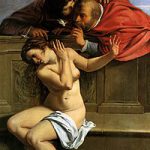
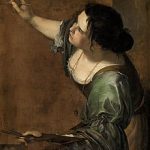
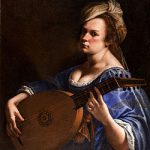
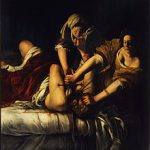


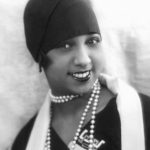

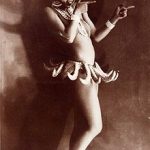
Pingback: The Dinner Party – Wing One Prehistory to Classical Rome – Wining About Herstory
Pingback: The Dinner Party – Wing 2 – Part 2 – Wining About Herstory